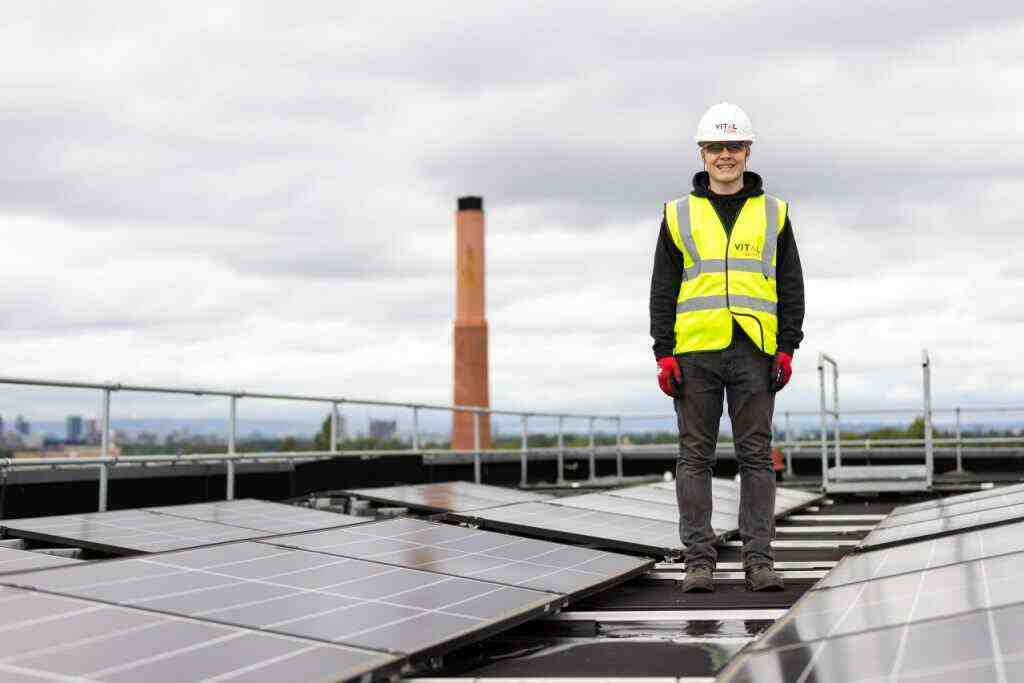Global Electricity Demand from Data Centers, Cryptocurrencies, and Artificial Intelligence: A Rising Challenge
Key Insights
– Global electricity demand from data centers, cryptocurrencies, and artificial intelligence is projected to surge in the coming years.
– Data centers are expanding rapidly, consuming significant amounts of electricity.
– Renewables, nuclear power, and energy-efficient technologies are expected to meet the growing demand and reduce emissions.
– Europe is leading the way in decarbonizing its power sector, with a 13% annual decline in emissions intensity.
Detailed Outline
I. Introduction
The International Energy Agency (IEA) forecasts a significant increase in global electricity demand driven by data centers, cryptocurrencies, and artificial intelligence. The growth of these technologies is reshaping the energy landscape, presenting challenges and opportunities for sustainable energy development.
II. Data Centers: A Growing Energy Consumer
The number of data centers worldwide is rapidly increasing, with more than 8,000 currently in operation. The United States, Europe, and China are the largest markets for data centers, accounting for over half of the global total. Data centers consume vast amounts of electricity to power their servers, cooling systems, and other equipment. In Ireland, data centers are projected to consume 32% of the country’s total electricity by 2026, up from 17% in 2022.
III. Cryptocurrencies: A Controversial Energy Consumer
Cryptocurrency mining, particularly Bitcoin, is another major driver of electricity demand. The energy-intensive process of mining cryptocurrencies requires specialized computers that operate 24/7. The environmental impact of cryptocurrency mining has raised concerns, leading to debates about its sustainability.
IV. Artificial Intelligence: A Power-Hungry Technology
Artificial intelligence (AI) is rapidly advancing, requiring immense computational power to train and operate AI models. AI applications, such as natural language processing, image recognition, and machine learning, are becoming increasingly sophisticated and data-intensive. The growth of AI is expected to further increase electricity demand in the coming years.
V. Overall Global Electricity Demand
Global electricity demand is projected to grow by 3.4% annually until 2026. This increase is primarily driven by economic growth, population expansion, and the rising adoption of digital technologies. Renewables, nuclear power, and energy-efficient technologies are expected to meet this growing demand while reducing carbon emissions.
VI. Renewables and Nuclear Power: The Clean Energy Solution
Renewables, such as wind, solar, and hydro, are expected to account for almost half of the world’s electricity generation by 2026. Nuclear power is also playing a significant role in providing reliable and low-carbon electricity. Europe is leading the way in decarbonizing its power sector, with a 13% annual decline in emissions intensity.
VII. Conclusion
The rising electricity demand from data centers, cryptocurrencies, and artificial intelligence presents both challenges and opportunities for the energy sector. By embracing renewables, nuclear power, and energy efficiency, we can meet this growing demand while mitigating its environmental impact. The transition to a clean energy future requires collaboration among governments, industries, and consumers to ensure a sustainable and resilient energy system.
Call to Action
As individuals, we can contribute to a sustainable energy future by reducing our energy consumption, supporting renewable energy initiatives, and advocating for policies that promote clean energy and energy efficiency. Together, we can create a world where data centers, cryptocurrencies, and artificial intelligence thrive without compromising our planet.
